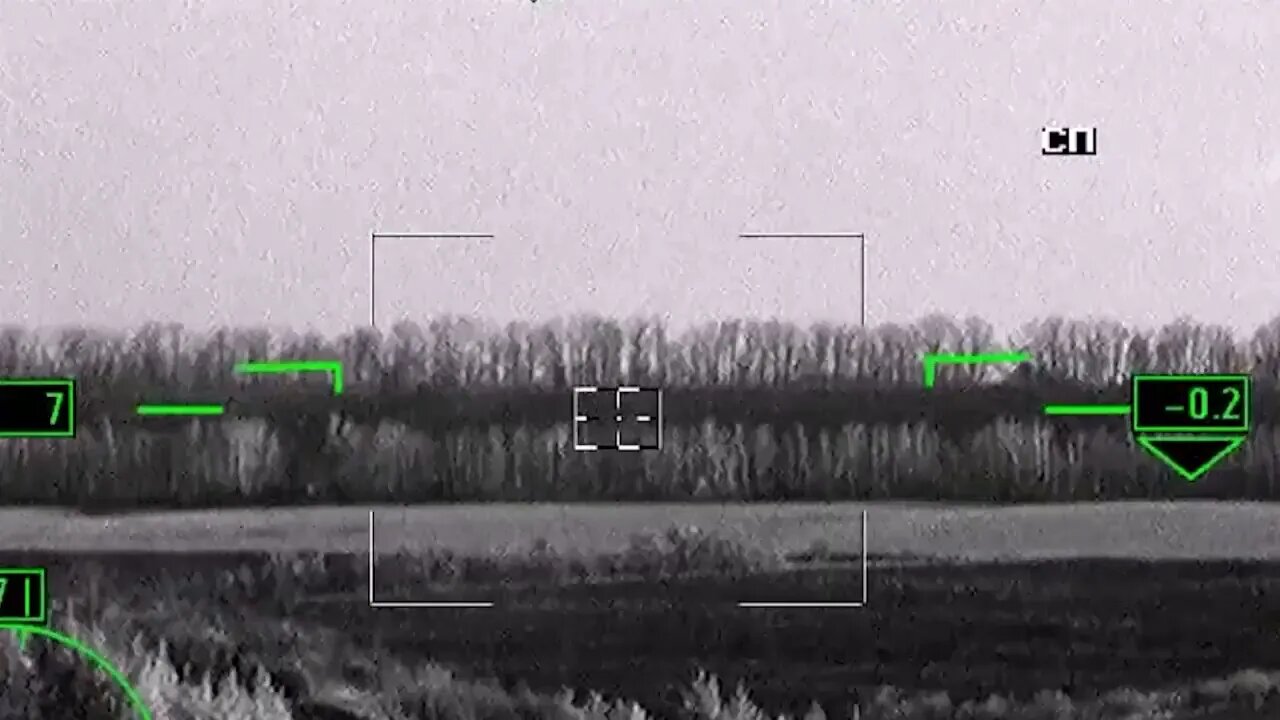Premium Only Content

Russian Su-24m Bomber Destroys Camouflaged Ukrainian Positions!
🇷🇺🇺🇦⚡The Su-24m bomber destroys the camouflaged positions of the Ukrainian military!
Su-24m Bomber System Information 👇
Background Information
One of the conditions for accepting the Sukhoi Su-7B into service in 1961 was the requirement for Sukhoi to develop an all-weather variant capable of precision air strikes.
Preliminary investigations with S-28 and S-32 aircraft revealed that the basic Su-7 design was too small to contain all the avionics required for the mission.
OKB-794 (later known as Leninets) was tasked with developing an advanced nav/attack system, codenamed Puma, which would be at the core of the new aircraft.
That same year, the United States proposal for their new all-weather strike fighter would be the TFX.
The resulting F-111 would introduce a variable-geometry wing for greatly increased payload, range, and low-level penetration capabilities.
In 1962–1963, Sukhoi initially set out to build an aircraft without the complexity of moving wings like the F-111.
It designed and built a mockup of S-6, a delta wing aircraft powered by two Tumansky R-21 turbojet engines and with a crew of two in a tandem arrangement.
The mockup was inspected but no further work was ordered due to lack of progress on the Puma hardware.
In 1964, Sukhoi started work on S-58M.
The aircraft was supposed to represent a modification of the Sukhoi Su-15 interceptor (factory designation S-58).
In the meantime, revised Soviet Air Force requirements called for a low-altitude strike aircraft with STOL capability.
A key feature was the ability to cruise at supersonic speeds at low altitude for extended periods of time in order to traverse enemy air defenses.
To achieve this, the design included two Tumansky R-27 afterburning turbojets for cruise and four Rybinsk RD-36-35 turbojets for STOL performance.
Side-by-side seating for the crew was implemented since the large Orion radar antennas required a large frontal cross-section.
To test the six-engine scheme, the first Su-15 prototype was converted into S-58VD flying laboratory which operated in 1966–1969.
Design Phase
The aircraft was officially sanctioned on 24 August 1965 under the internal codename T-6.
The first prototype, T-6-1, was completed in May 1967 and flew on 2 July with Vladimir Ilyushin at the controls.
The initial flights were performed without the four lift jets, which were installed in October 1967.
At the same time, R-27s were replaced with Lyulka AL-21Fs.
STOL tests confirmed the data from S-58VD that short-field performance was achieved at the cost of significant loss of flight distance as the lift engines occupied space normally reserved for fuel, loss of under-fuselage hardpoints, and instability during transition from STOL to conventional flight.
So the six-engine approach was abandoned.
By 1967, the F-111 had entered service and demonstrated the practical advantages and solutions to the technical problems of a swing-wing design.
On 7 August 1968, the OKB was officially tasked with investigating a variable geometry wing for the T-6.
The resulting T-6-2I first flew on 17 January 1970 with Ilyushin at the controls.
The subsequent government trials lasted until 1974, dictated by the complexity of the on-board systems.
The day or night and all-weather capability was achieved – for the first time in Soviet tactical attack aircraft – thanks to the Puma nav/attack system consisting of two Orion-A superimposed radar scanners for nav/attack, a dedicated Relyef terrain clearance radar to provide automatic control of flights at low and extremely low altitudes, and an Orbita-10-58 onboard computer.
The crew was equipped with Zvezda K-36D ejection seats, allowing them to bail out at any altitude and flight speed, including during takeoff and landing.
The resulting design with a range of 3,000 kilometers (1,900 mi) and payload of 8,000 kilograms (18,000 lb) was slightly smaller and shorter ranged than the F-111.
Ten fatal accidents occurred during Su-24 development, killing thirteen Sukhoi and Soviet Air Force test pilots, and more than 5 crashes per year were occurring at average after that
The first production aircraft flew on 31 December 1971 with V.T. Vylomov at the controls, and on 4 February 1975, T-6 was formally accepted into service as the Su-24.
About 1,400 Su-24s were produced.
Upgrades
Surviving Su-24M models have gone through a life-extension and updating program, with GLONASS, upgraded cockpit with multi-function displays (MFDs), HUD, digital moving-map generator, Shchel helmet-mounted sights, and provision for the latest guided weapons, including R-73 (AA-11 'Archer') air-to-air missiles.
The upgraded aircraft are designated Su-24M2.
-
 43:58
43:58
Members Club
54 minutes agoTrump Death Hoax, Labor Day Fashion, and the Year of the Cursed CEO - MC08
-
 LIVE
LIVE
StoneMountain64
1 hour agoTOP GHILLIE SNIPERS play Warzone's NEW UPDATE
48 watching -
 LIVE
LIVE
Reidboyy
1 hour agoHow To Make $$$ in Delta Force Console Operations!
40 watching -
 1:00:35
1:00:35
Timcast
2 hours agoDOJ To BAN Transgenders From Owning Guns
101K113 -
 LIVE
LIVE
Side Scrollers Podcast
3 hours agoUK JAILS TV WRITER FOR WRONG THINK + TWITCH ALLOWS CYBERSTALKING + MORE | SIDE SCROLLERS LIVE
298 watching -
 LIVE
LIVE
Viss
2 hours ago🔴LIVE - PUBG Solo Tactics To Win Consistently! - PUBG 101
87 watching -
 2:05:54
2:05:54
Steven Crowder
4 hours agoLive Reaction: RFK Faces Senate Grilling After Employees Demand His Resignation
261K216 -
 1:02:58
1:02:58
The Rubin Report
3 hours agoPress Stunned by Trump’s Brutally Honest Message for Elon Musk
46.7K44 -
 LIVE
LIVE
Rebel News
1 hour agoPolice chief says 'comply' with intruders, Carney on temp workers, Trump on tariffs | Rebel Roundup
361 watching -
 19:19
19:19
Neil McCoy-Ward
2 hours ago🚨 Hospitals Are Bracing For MASS Casualties...
7.84K2